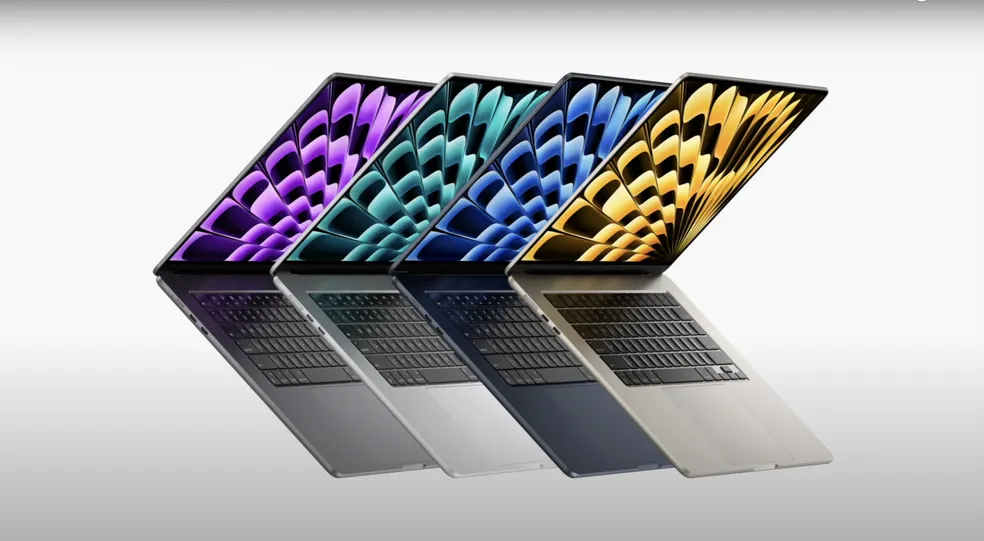What Is Internet of Things and The Future of Smart Homes
Discover what Internet of Things (IoT) is, how it works, and how it's revolutionizing our homes with smart connected devices that make daily life easier.
Picture this: you walk into your house and the lights automatically turn on, the AC is already set to the perfect temperature, and your smart coffee maker has brewed your favorite blend - all without you lifting a finger. This isn't some sci-fi movie anymore, it's the reality of the Internet of Things (IoT).
IoT is completely transforming how we interact with our homes and the objects around us. Since 2020, the number of connected devices has exploded, and today you can control pretty much everything with your voice or smartphone. But what does this tech revolution really mean?
In this article, I'll break down what Internet of Things is in simple, practical terms, explain how it works, show you which devices are already available, and most importantly: how you can start transforming your home into a smart environment today. We'll also explore what's coming next in this fascinating field.
Table of Contents
- What is Internet of Things (IoT)
- How Internet of Things Works in Practice
- Key Technologies That Make IoT Happen
- IoT Devices You Can Already Have at Home
- Benefits and Advantages of Smart Homes
- IoT Applications Beyond the Home
- Challenges and Risks of Internet of Things
- The Future of Smart Homes
What is Internet of Things (IoT)
The Internet of Things is a massive network where everyday objects gain "intelligence" and connect to the internet. Instead of just turning on and off, these devices can collect information, communicate with each other, and make decisions automatically.
Think about it this way: your traditional thermostat only controls temperature when you physically adjust it. But a smart thermostat learns your schedule, knows when you're not home, monitors the outside weather, and adjusts everything automatically to save energy while keeping you comfortable.
The term was coined by researcher Kevin Ashton in the late 90s when he was working with radio frequency identification (RFID) chips to track products. The idea was simple: connect physical objects to the internet using sensors and let them "talk" to each other.
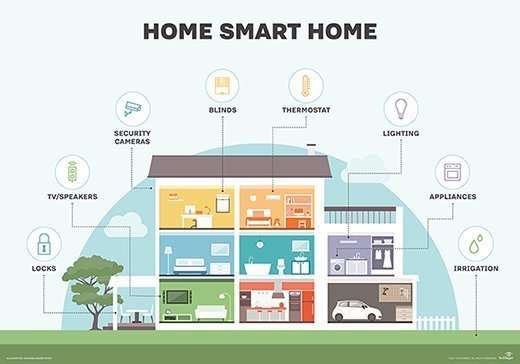
Today, this technology has evolved way beyond what Ashton imagined. We have everything from fridges that create shopping lists to cars that drive themselves. In the US, there are already over 1.5 billion connected digital devices - that's more than 4 devices per person!
IoT works like a massive digital orchestra where each "musician" (device) has their role, but they all play in harmony to create a unique experience. Your smart home compatible with Alexa is a perfect example of this technological symphony.
How Internet of Things Works in Practice
IoT might seem like magic, but it actually follows a well-organized structure with four main layers. Let me break down each one simply:
Perception Layer - The "Senses" of Devices
This is the foundation of everything. Here's where the sensors capture information from the real world - temperature, motion, light, sound, humidity. It's like each device has its own "senses" to understand what's happening around it.
For example, a motion sensor detects when you enter a room, a temperature sensor measures if it's too hot, and a smart camera "sees" who's at the door.
Network Layer - The "Conversation" Between Devices
The collected data needs to travel from one place to another. This happens through networks like Wi-Fi, Bluetooth, 4G, or 5G. It's like the devices are constantly sending messages to each other.
When the motion sensor detects movement, it "tells" the smart lights: "Hey, someone's here, time to turn on!"
Processing Layer - The "Brain" of the System
This is where the magic happens. Data is analyzed by intelligent algorithms (often using Artificial Intelligence) that identify patterns and make decisions. It's the "brain" that decides what to do with all this information.
If you always turn on the AC at 6 PM on hot days, the system learns this pattern and starts doing it automatically.
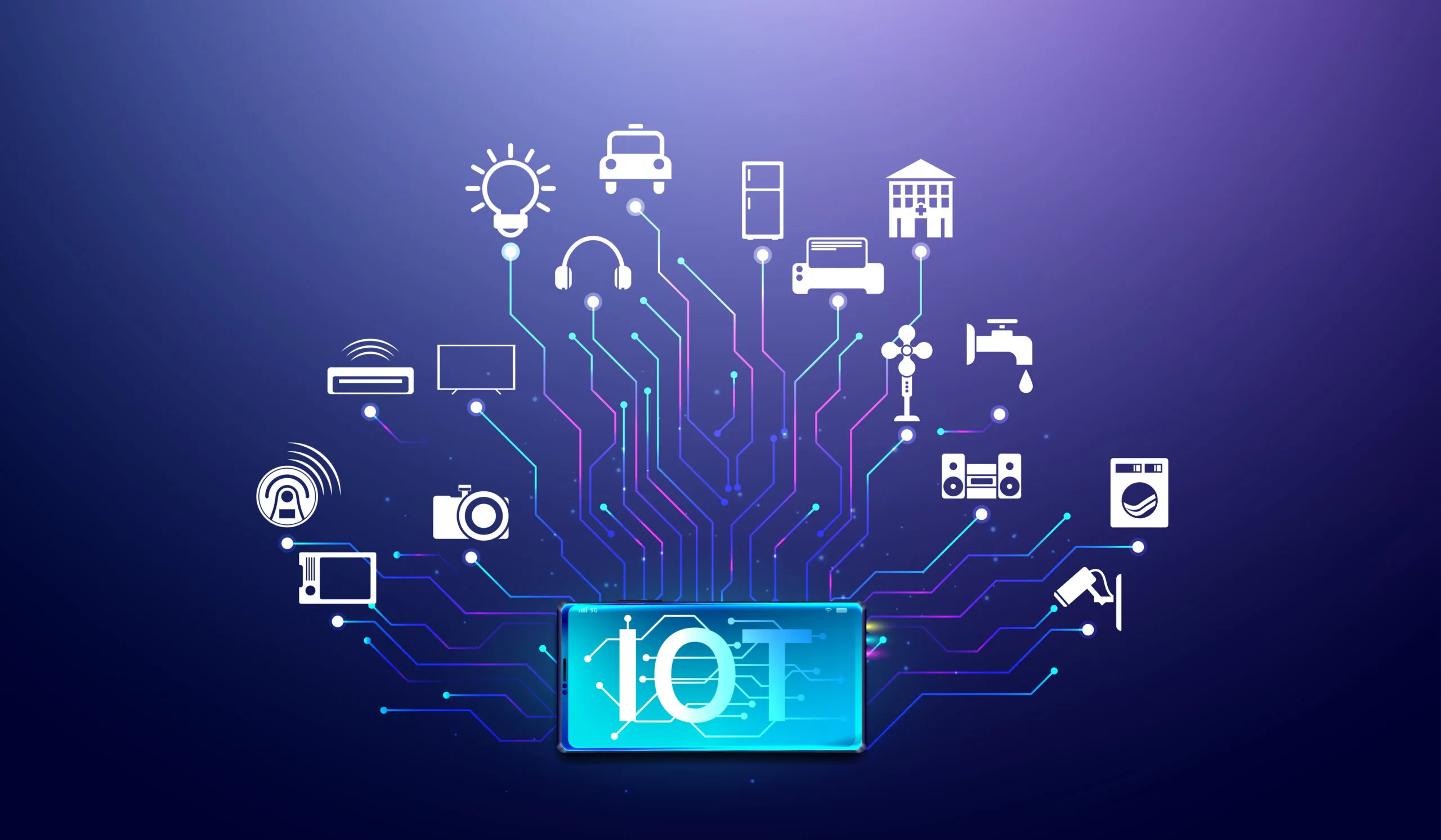
Application Layer - The Interface with You
Finally, we have the part you see and use: smartphone apps, voice commands, digital panels. It's through this layer that you control everything and receive processed information in a user-friendly way.
Through the app on your phone, you see that the AC turned on by itself, can adjust the temperature, or even turn it off if your plans changed and you're not going home.
Key Technologies That Make IoT Happen
For all these devices to work together, they need to "speak the same language." There are various communication protocols that enable this conversation. Let me show you the main ones:
Wireless Connectivity
Wi-Fi is the most common one you already know - it offers high speed and is ideal for devices that need to send lots of data, like security cameras. Bluetooth and its energy-efficient version BLE (Bluetooth Low Energy) are perfect for small devices like smartwatches and intelligent wearables.
Zigbee and Z-Wave specialize in home automation. They create a "mesh network" where each device helps retransmit signals, making the entire network more robust and reliable.
Communication Protocols
MQTT is like WhatsApp for IoT devices - a lightweight and efficient protocol for exchanging messages between appliances. CoAP is similar but optimized for devices with low power and limited memory.
For those wanting to dive deeper into the subject, I recommend "Code: The Hidden Language of Computer Hardware and Software", which explains in detail how these technologies work.
Cloud and Edge Computing
Data collected by your devices can be processed in two ways: in the cloud (remote servers) or at the edge (edge computing), where processing happens closer to the devices.
Cloud computing offers almost unlimited processing power, while edge computing reduces latency and works even if the internet goes down temporarily.
IoT Devices You Can Already Have at Home
Now let's get to what matters: which devices you can buy today to start your journey toward a smart home. The good news is you don't need to spend a fortune to get started!
Smart Speakers and Virtual Assistants
Virtual assistants like Alexa, Google Assistant, and Siri are like the "conductor" of your smart device orchestra. With a simple voice command, you control lights, music, temperature, and much more.
A basic smart speaker costs under $50 and can already control dozens of other compatible devices. It's the ideal starting point for beginners.
Smart Lighting
Smart bulbs are one of the simplest and cheapest ways to experience IoT. You can program schedules, create scenes with different colors and intensities, and even simulate presence when you're traveling.
Options range from $10 to more advanced models with millions of colors. The investment pays for itself quickly through electricity savings.
Smart Outlets and Switches
If you don't want to replace all your appliances, smart outlets (smart plugs) are the perfect solution. They transform any regular appliance into a smart device.
Your coffee maker, heater, fan, or any other appliance can be controlled remotely and programmed to turn on at specific times.
Smart Home Security
Smart cameras, video doorbells, and digital locks are revolutionizing home security. You can see who's at the door, open the gate remotely, and monitor your home from anywhere in the world.
Door and window sensors, motion detectors, and integrated alarm systems create a complete protection network that you control from your phone.
Climate Control
Smart thermostats learn your habits and preferences, automatically adjusting temperature to maximize comfort and savings. Some models can reduce energy costs by up to 15%.
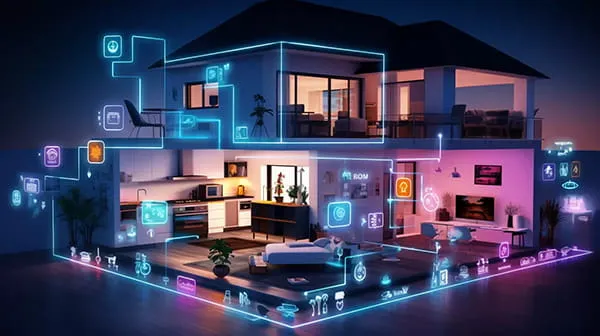
Benefits and Advantages of Smart Homes
Having a smart home goes way beyond the "cool factor" of controlling everything from your phone. The practical and financial benefits are real and measurable:
Energy and Money Savings
IoT devices can significantly reduce your energy expenses. Smart bulbs consume up to 80% less energy than traditional incandescent bulbs, and smart thermostats optimize AC usage based on your routine.
Studies show that smart homes can save between 10% to 23% on electricity bills. On a $150 monthly bill, that represents savings of $180 to $414 per year!
Comfort and Convenience
Imagine never forgetting to turn off the iron or worrying if you locked the door. With IoT, you have complete control of your home in the palm of your hand, wherever you are.
Automated routines make your life simpler: lights gradually turn on to wake you up in the morning, coffee is ready when you come downstairs, and the temperature is perfect when you get home from work.
Enhanced Security
Smart security systems don't just detect problems - they prevent risky situations. Gas or water leak sensors can automatically shut off valves and immediately alert you.
Cameras with facial recognition can distinguish between family members, friends, and strangers, sending specific alerts for each situation.
Health Monitoring
IoT devices also take care of your health and well-being. Air quality sensors monitor pollution and allergens, automatically adjusting purifiers and ventilation systems.
For homes with elderly residents or people with special needs, motion sensors and smart cameras provide peace of mind without invading privacy.
If you work from home, also check out the best tech accessories for home office workers that can integrate with your smart ecosystem.
IoT Applications Beyond the Home
Internet of Things is transforming practically every sector of the economy. Let me show you some fascinating applications that are already reality:
Digital Health
In healthcare, IoT devices are literally saving lives. Heart monitors that detect arrhythmias and automatically call emergency services, insulin pumps that adjust to glucose levels in real-time, and even smart pills that confirm if patients took their medication.
Hospitals use sensors to track equipment, monitor patients remotely, and optimize the flow of people and resources.
Smart Agriculture
Modern farms are true technology centers. Soil sensors monitor moisture, pH, and nutrients, drones map crops identifying pests and diseases, and automated irrigation systems save water by applying it only where and when needed.
A farmer can monitor thousands of acres from their smartphone, receiving real-time alerts about any anomalies.
Industry 4.0
In factories, sensors monitor machines 24/7, predicting failures before they happen. This drastically reduces unplanned downtime and maintenance costs. Collaborative robots work alongside humans, and the entire production chain is optimized in real-time.
To better understand these technical concepts, "How Computers Really Work: A Hands-On Guide to the Inner Workings of the Machine" provides a solid foundation on hardware and systems.
Smart Cities
Traffic lights that adjust to real-time traffic, waste collection systems that optimize routes based on container levels, and public lighting that varies according to pedestrian movement are just some examples of how IoT is creating more efficient and sustainable cities.
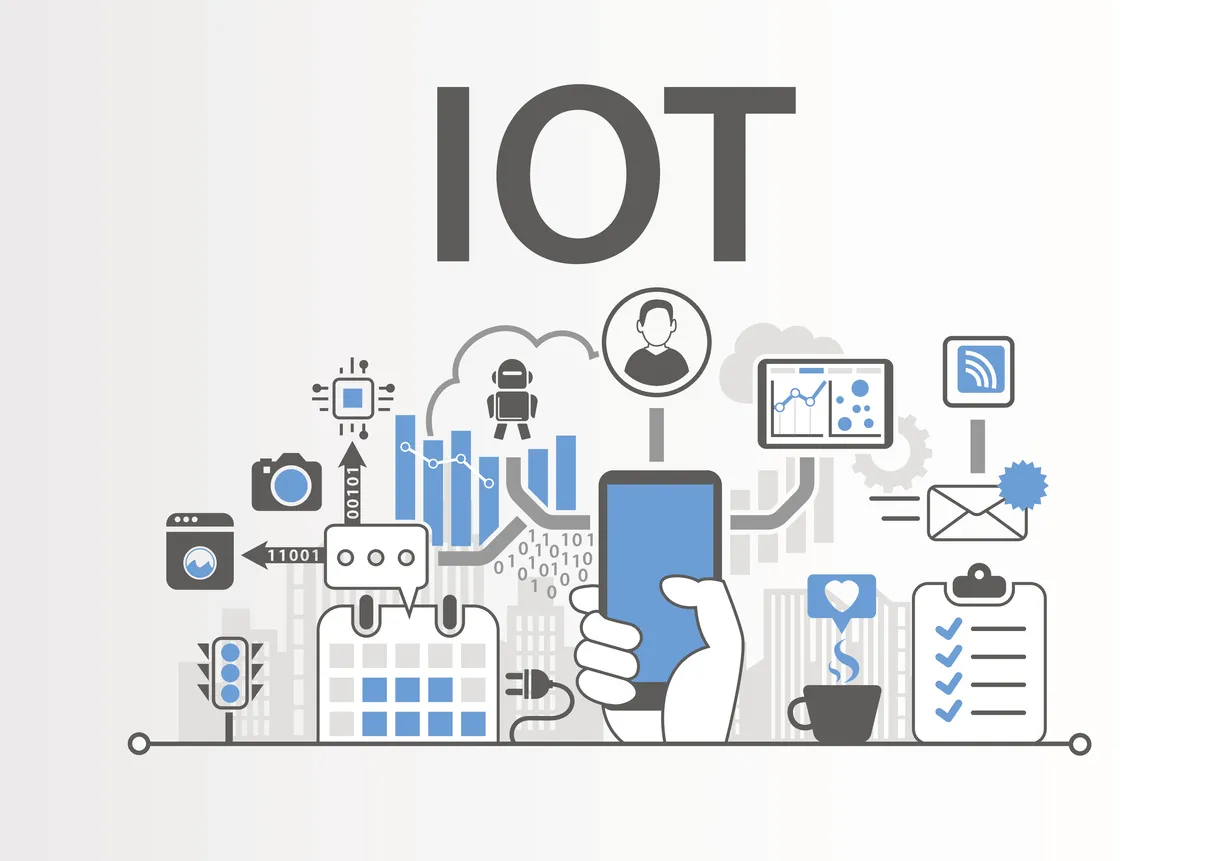
Challenges and Risks of Internet of Things
Like any powerful technology, IoT also brings challenges we need to understand and know how to handle:
Security and Privacy
The biggest risk of IoT is also its greatest strength: connectivity. Every connected device is a potential entry point for hackers. Cases of invaded security cameras or smart speakers spying on conversations have already been documented.
The solution is always keeping devices updated, using strong and unique passwords, and buying products from trusted manufacturers who take security seriously.
Management Complexity
Managing dozens of smart devices can become a nightmare if not well planned. Different apps, incompatible protocols, and constant updates can frustrate even the most tech-enthusiastic users.
That's why it's important to start small, choose a main ecosystem (Apple HomeKit, Google Home, or Amazon Alexa) and expand gradually.
Technology Dependence
When your entire house depends on the internet and devices working perfectly, a failure can greatly impact your routine. It's important to always have manual alternatives and not depend 100% on automation for critical functions.
Data Privacy
IoT devices collect an impressive amount of personal data: when you wake up, your eating habits, how often you leave home, what type of music you listen to. It's crucial to understand what data each device collects and how it's used.
To dive deeper into digital security aspects, I recommend "The Hardware Hacking Handbook: Breaking Embedded Security with Hardware Attacks", which covers these topics accessibly.
The Future of Smart Homes
What awaits us in the coming years is even more fascinating than what we already have today. Let me show you the main trends that will shape the future of smart homes:
More Advanced Artificial Intelligence
Future virtual assistants will be much smarter and more proactive. Instead of just responding to commands, they'll anticipate your needs. Imagine coming home and finding the environment already prepared exactly as you like it, without ever having programmed anything?
AI will learn subtle patterns in your behavior and make increasingly precise decisions about temperature, lighting, music, and even meal suggestions based on what's in your fridge.
Edge Computing Everywhere
Local processing (edge computing) will become standard. This means your smart home will work perfectly even without internet, with almost instantaneous response times and greater privacy since data stays local.
Sustainability and Energy Efficiency
Future smart homes will be true energy management centers. Smart solar panels, home batteries, optimized electric car charging, and even selling excess energy back to the grid.
The goal is to achieve zero carbon footprint or even negative, where your home produces more clean energy than it consumes.
Total Health Integration
Advanced sensors will monitor air quality, pollution levels, presence of allergens, and even detect early signs of diseases through analysis of the air we breathe.
Smart mirrors will perform daily check-ups, bathrooms will analyze urine tests automatically, and smart beds will monitor sleep quality and vital signs.
Augmented Reality and Natural Interfaces
Controlling devices through gestures in the air, mental commands (yes, this is already being tested!), and augmented reality interfaces where you "see" virtual controls overlaid on real objects.
Blockchain and Decentralized Security
Blockchain technology will revolutionize IoT security, creating networks where the devices themselves validate and authorize communications, eliminating single points of failure.
Universal Interoperability
The dream of having all devices work together regardless of brand is becoming reality. Standards like Matter (developed by Apple, Google, Amazon, and other tech giants) promise total compatibility between different ecosystems.
The Internet of Things has already stopped being future to become present. Whether through a simple smart speaker or a complete home automation system, technology is here to make our lives easier, save resources, and connect us in ways we couldn't imagine just a few years ago.
What's most interesting is that you don't need to wait for the future to arrive - you can start your journey toward a smart home today, with affordable and easy-to-install devices. And as technology evolves, your devices also evolve through software updates.
The IoT revolution is just beginning, and the future promises to be even more incredible than we can imagine. The question is no longer "if" we'll live in completely smart homes, but "when" this will become as common as having a refrigerator or microwave at home today.
What about you - do you already have any smart devices at home? What was your first experience with IoT? The future of smart homes is happening now, and each of us is part of this fascinating transformation!
For those looking to expand their smart home setup, consider exploring smart home devices that can seamlessly integrate with your existing ecosystem. Whether you're just starting with basic smart gadgets or planning a comprehensive Internet of Things setup, the possibilities are endless.
The key is understanding that smart home technology isn't just about convenience - it's about creating a more efficient, secure, and sustainable way of living. As we move forward, the integration between our digital and physical worlds will only become more seamless and intuitive.
If you're interested in the technical side of how these systems work, books like "The AI Engineering Bible" and "AI Engineering: Building Applications with Foundation Models" provide deep insights into the artificial intelligence powering these smart systems.
For those who want to develop critical thinking about technology adoption and decision-making around smart home investments, "Critical Thinking, Logic & Problem Solving" offers valuable frameworks for evaluating new technologies and their impact on our daily lives.

